Our stop at Hannibal, Missouri, featured Samuel Clemens (Mark Twain), his boyhood, and his work. Clemens spent his childhood years from four to eighteen in Hannibal, which served as the backdrop for The Adventures of Tom Sawyer and The Adventures of Huckleberry Finn.
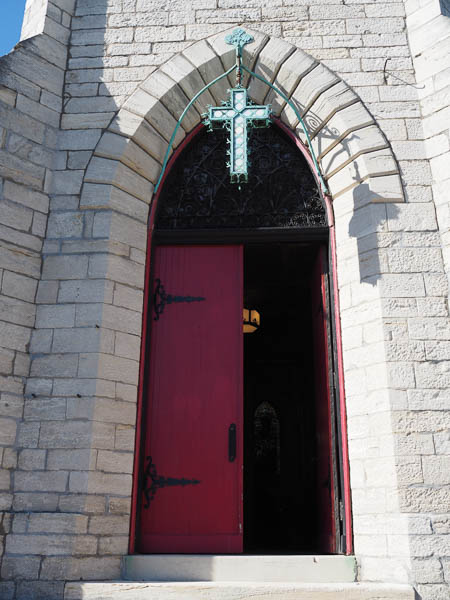
But our first stop was Trinity Episcopal Church for the stained glass.
The cross over the entryway was controversial at the time it was installed -- it lights up with electricity!
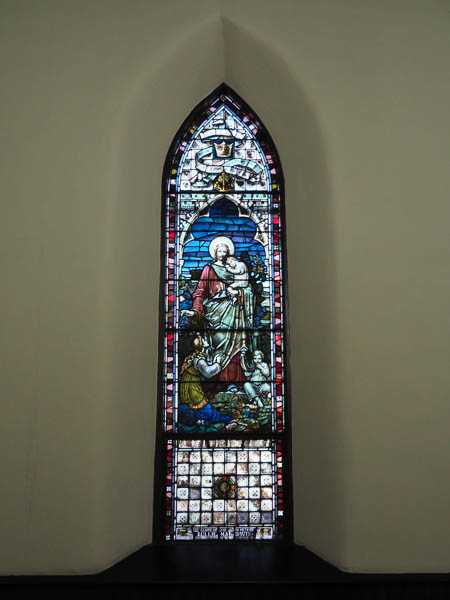
The stained glass windows were by various artists: Charles Booth, Emil Frei, Jr. and the Louis Comfort Tiffany Glass Company.
This is one of the Booth windows.
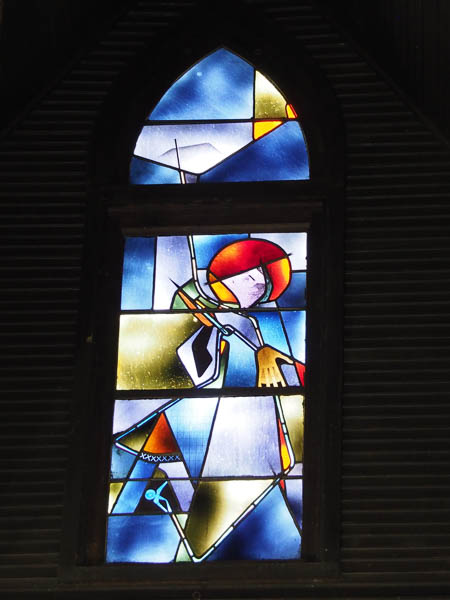
The windows by Emil Frei, which were installed in the clerestory, were and remain controversial because of the contrast with the traditional styles. Nevertheless, they are beautiful.
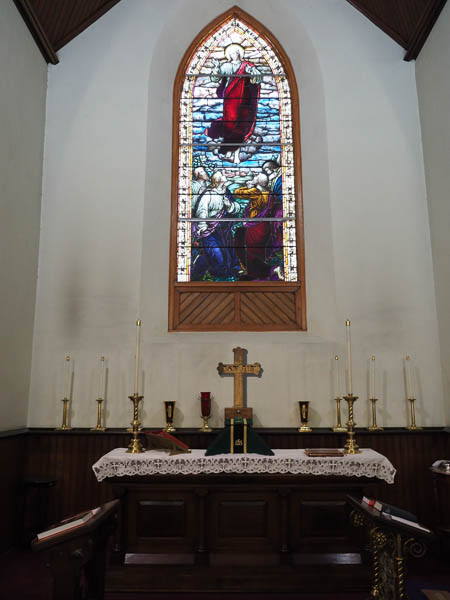
What interested us about the altar in this church was the Hebrew inscription carved into the wooden cross. The young woman who greeted us at the church did not know what it meant.
Subsequent research indicates that the first four letters of this inscription (reading right to left) are YHWH, which is the sacred name of God. Whether or not this actually represents the Hebrew inscription that Pilate had directed to be on Jesus' cross is controversial.
I haven't been able to find any reference to the final four letters (reading right to left): yod, dalet, alef, he (YDAH).
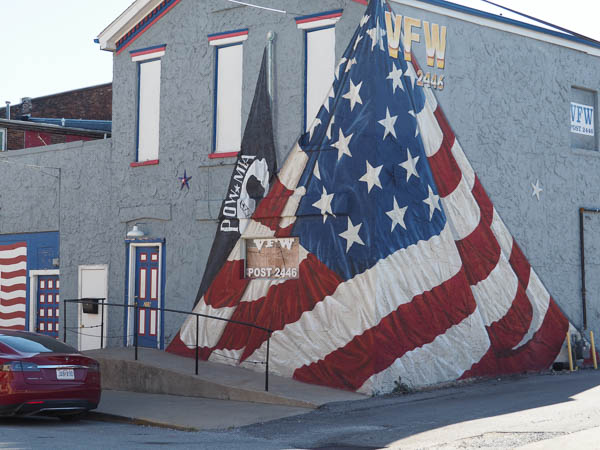
A striking mural on the VFW hall almost flutters in the breeze. I had to touch it to make sure the ripples weren't a result of the underlying stucco. As for the corner of the building -- it just disappears.
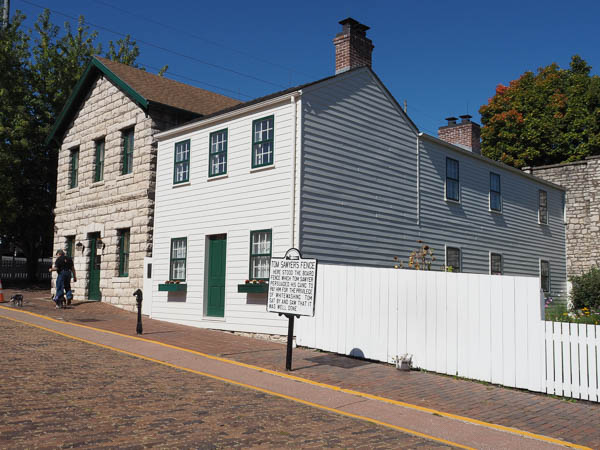
The Mark Twain Boyhood Home & Museum was the major stop in Hannibal, but I wasn't fond of it. It was crowded and cramped. Not my favorite thing. I quickly fled to the outside.
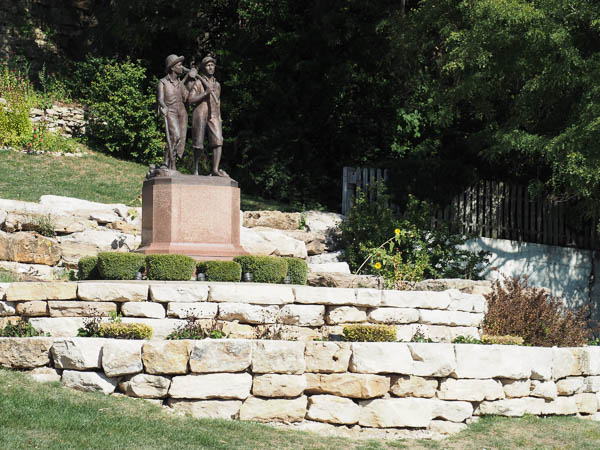
This bronze statue of Tom & Huck was created by Frederick Hibbard and unveiled in 1926. Cardiff Hill, behind the statue, was one of the haunts of the fictional heroes.
Stairs (244 steps) to the left of the statue lead up the hill to a lighthouse.
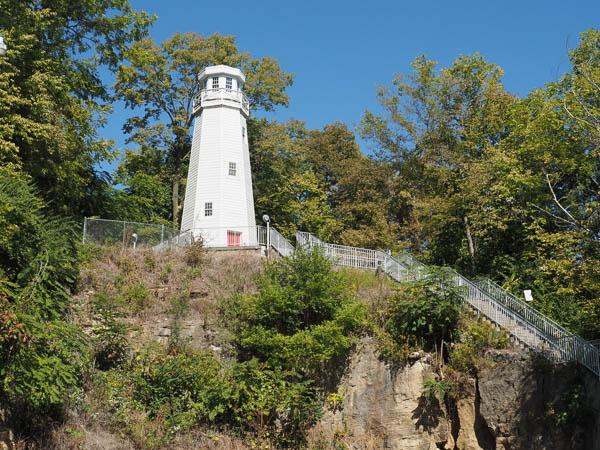
The lighthouse, high on the bluff, is ornamental without any navigational significance. It was built to honor the centennial of Clemens' birth in 1935.
The original lighthouse was destroyed by a windstorm. This replacement was constructed in 1963.
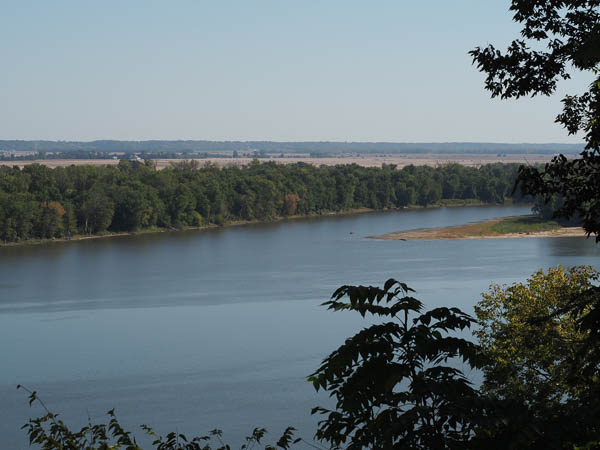
The view downriver from the lighthouse (huff, puff). Once I got up there I discovered that there is also a way to drive. If you have a car.
The Mississippi here has a wide floodplain. The bluffs on the other side are miles away.
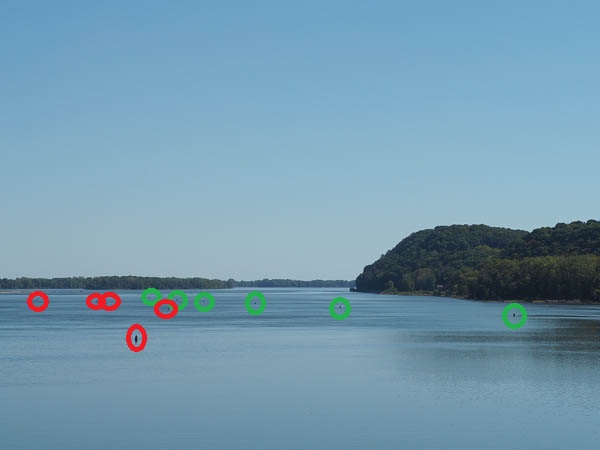
As we left Hannibal, we proceeded downriver on what appeared to be a large lake. Appearances could deceive. The channel markers snake through the water from one side to the other.
When travelling downriver, the channel marker buoys should be red on the left and green on the right. I've highlighted which buoys are which. The channel is actually rather narrow.
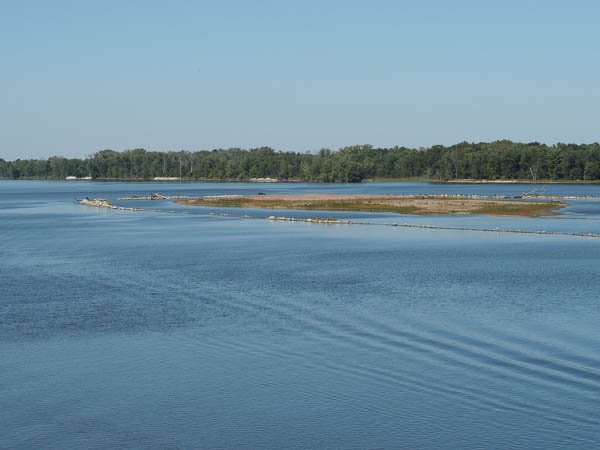
An odd sight that we saw frequently was a buttress or dam upstream of an island in the river. Sometimes, as here, the area behind the "dam" had partially filled in with sediment.
We asked if this was intended to "grow" the island upstream or if it was a repository for material dredged from the channel. It is actually designed to protect the island from erosion.
I found one explanation of similar work farther upstream.
Click your "back" button to return to the previous page or click for our picture album.